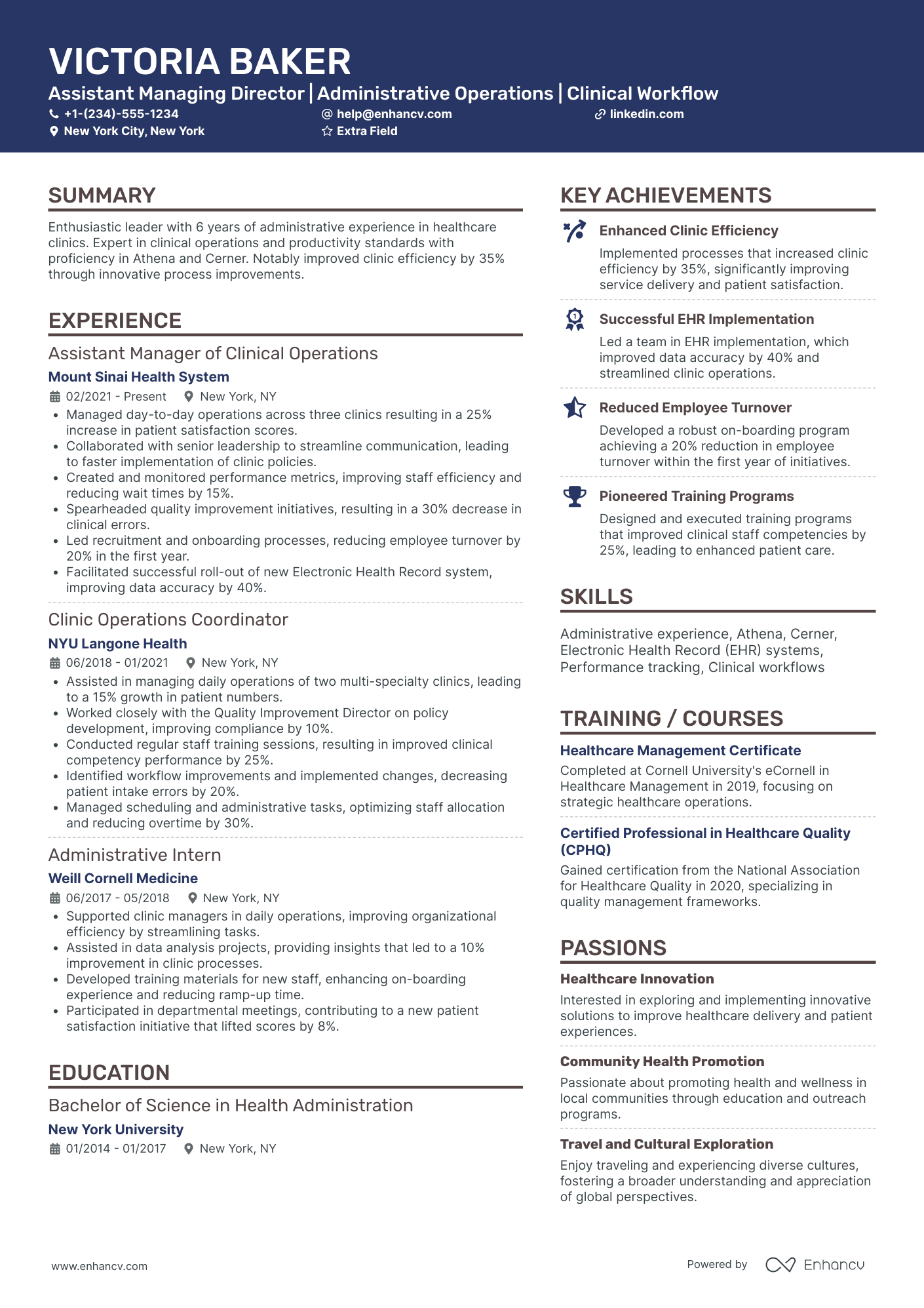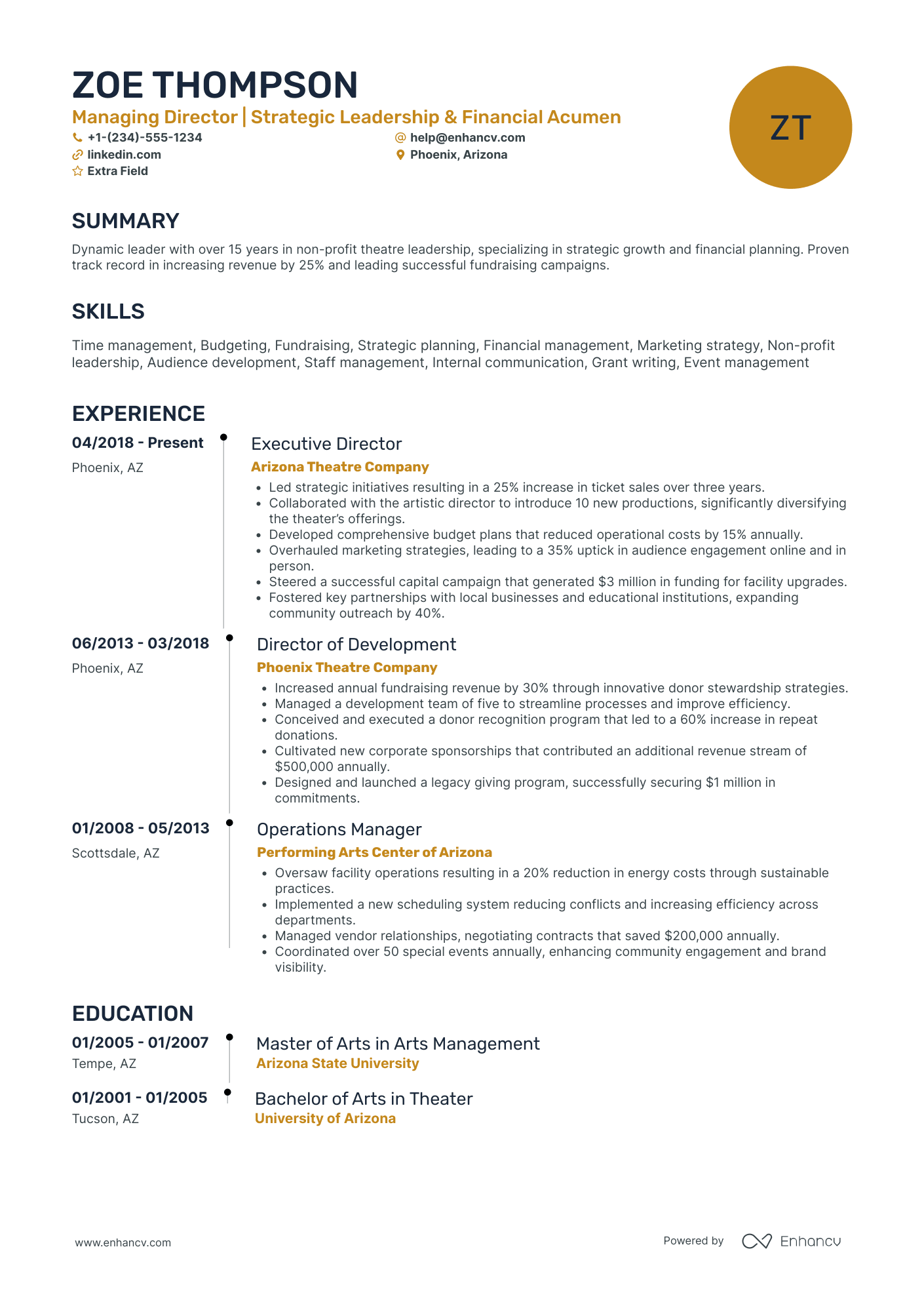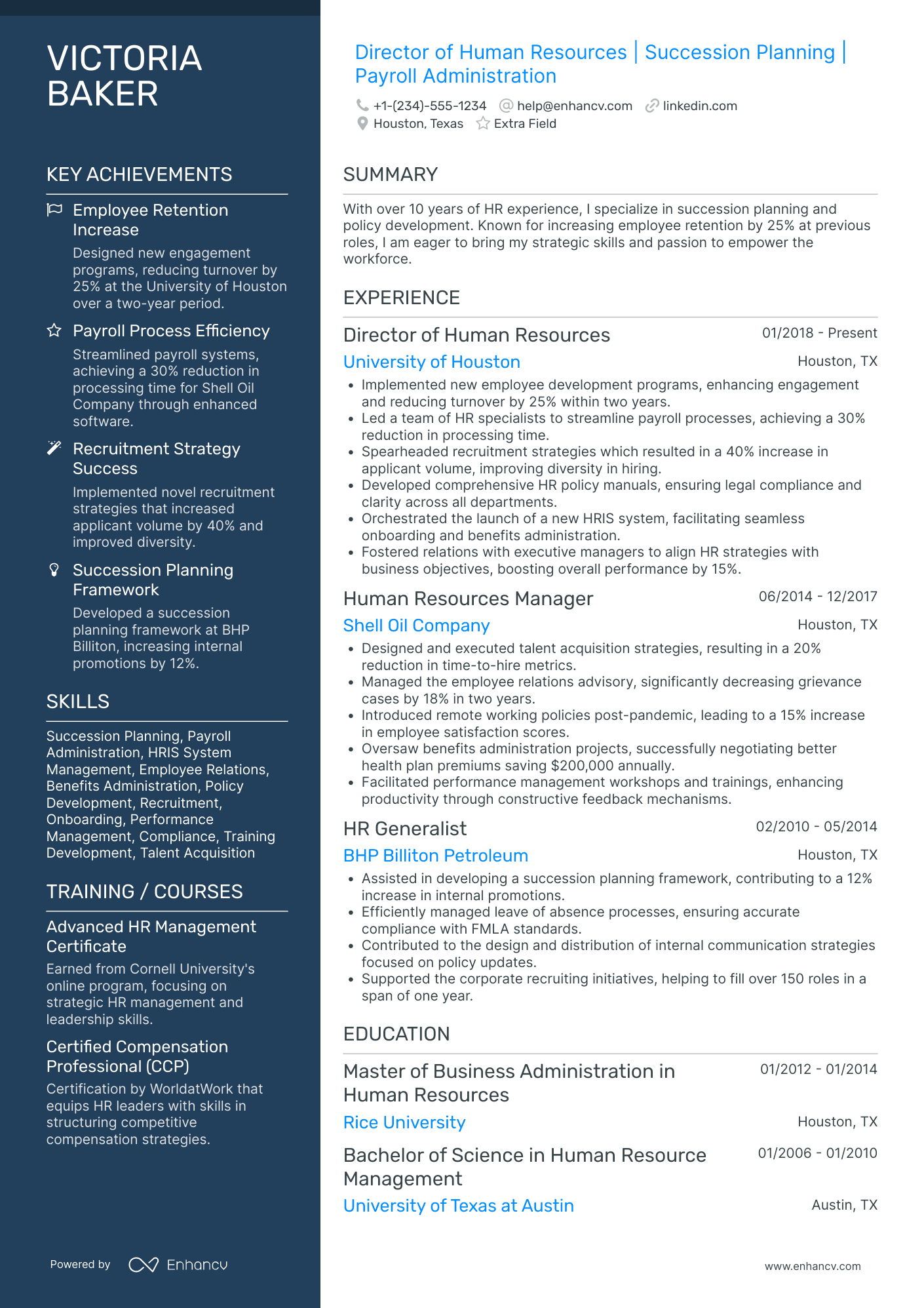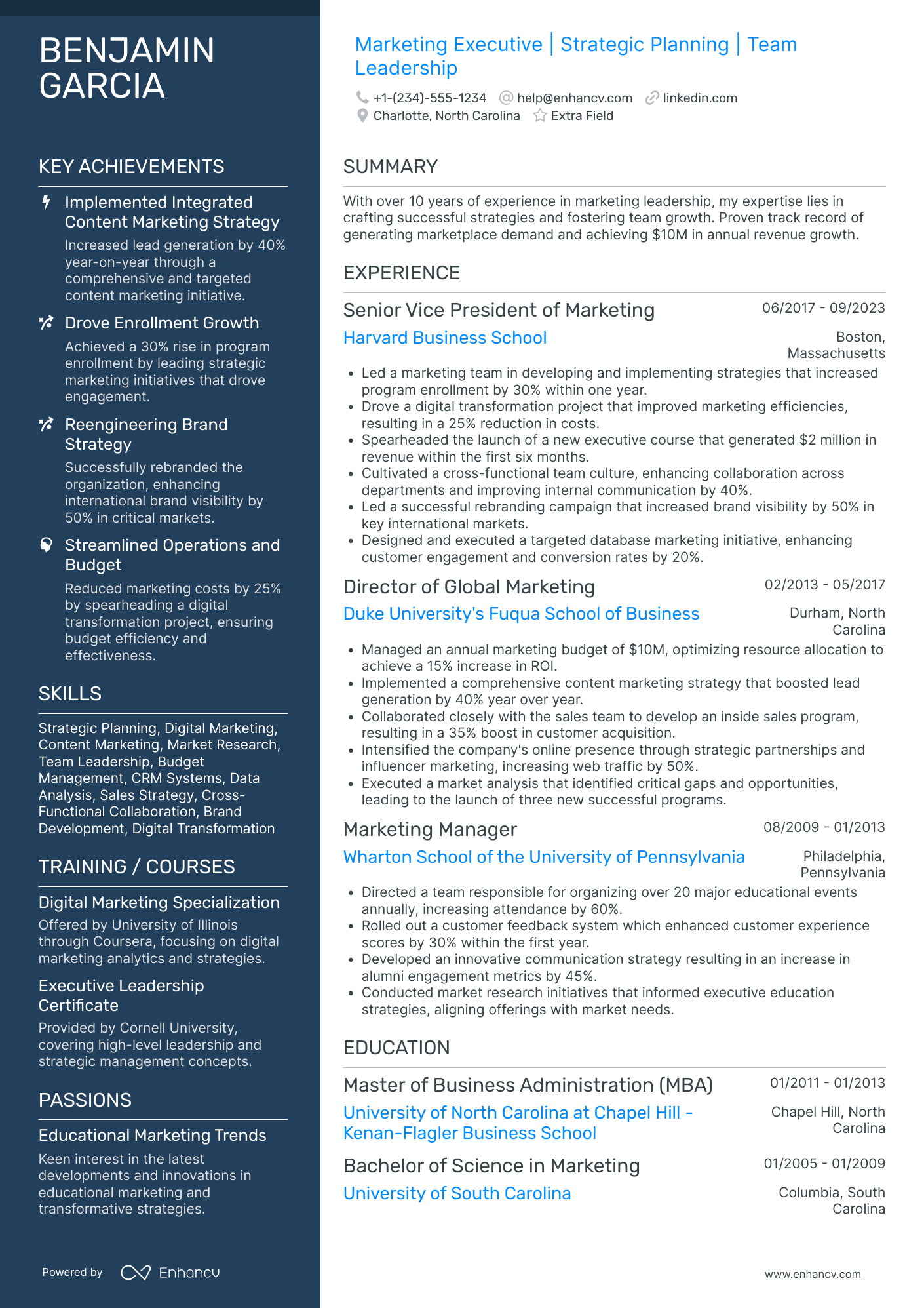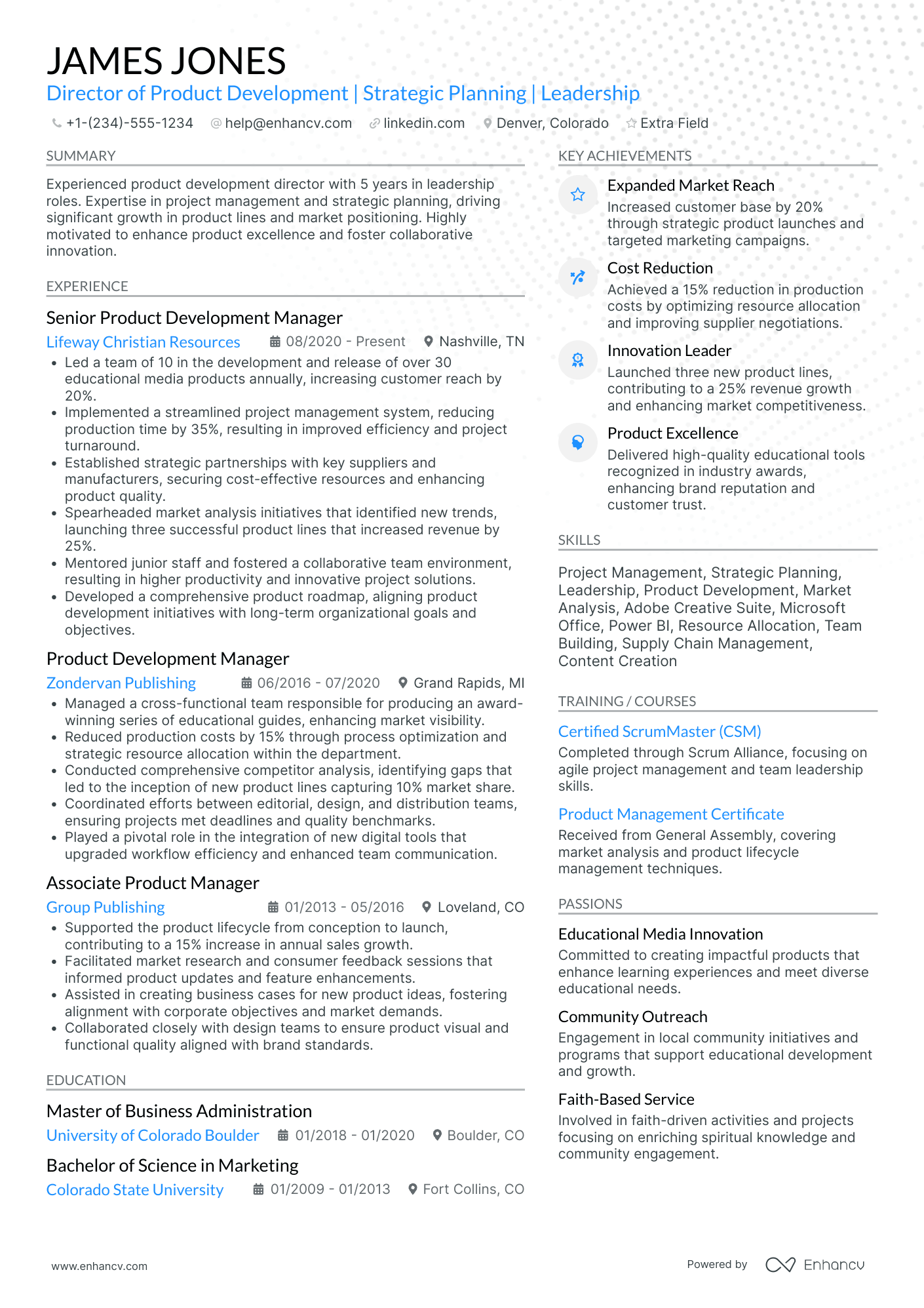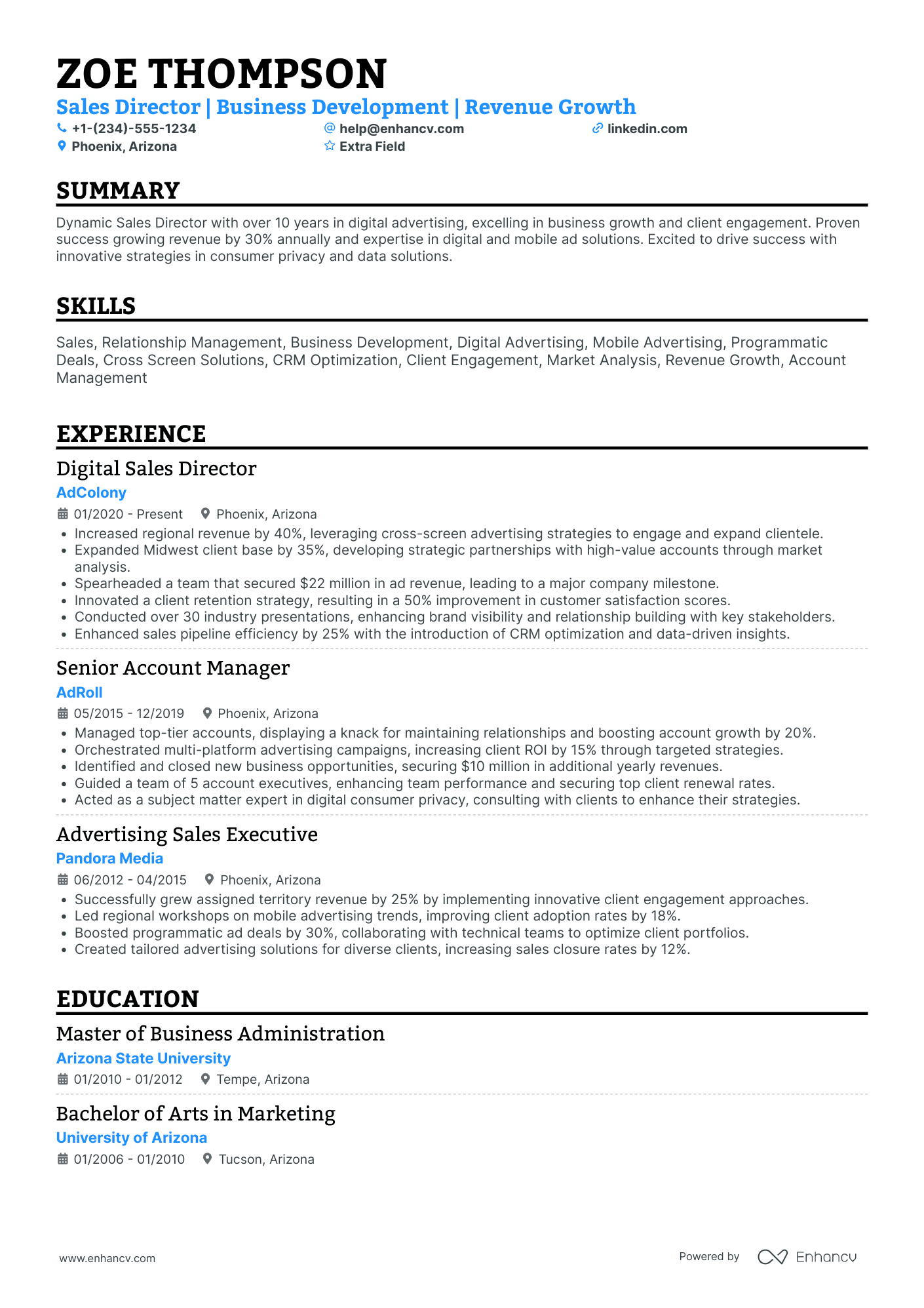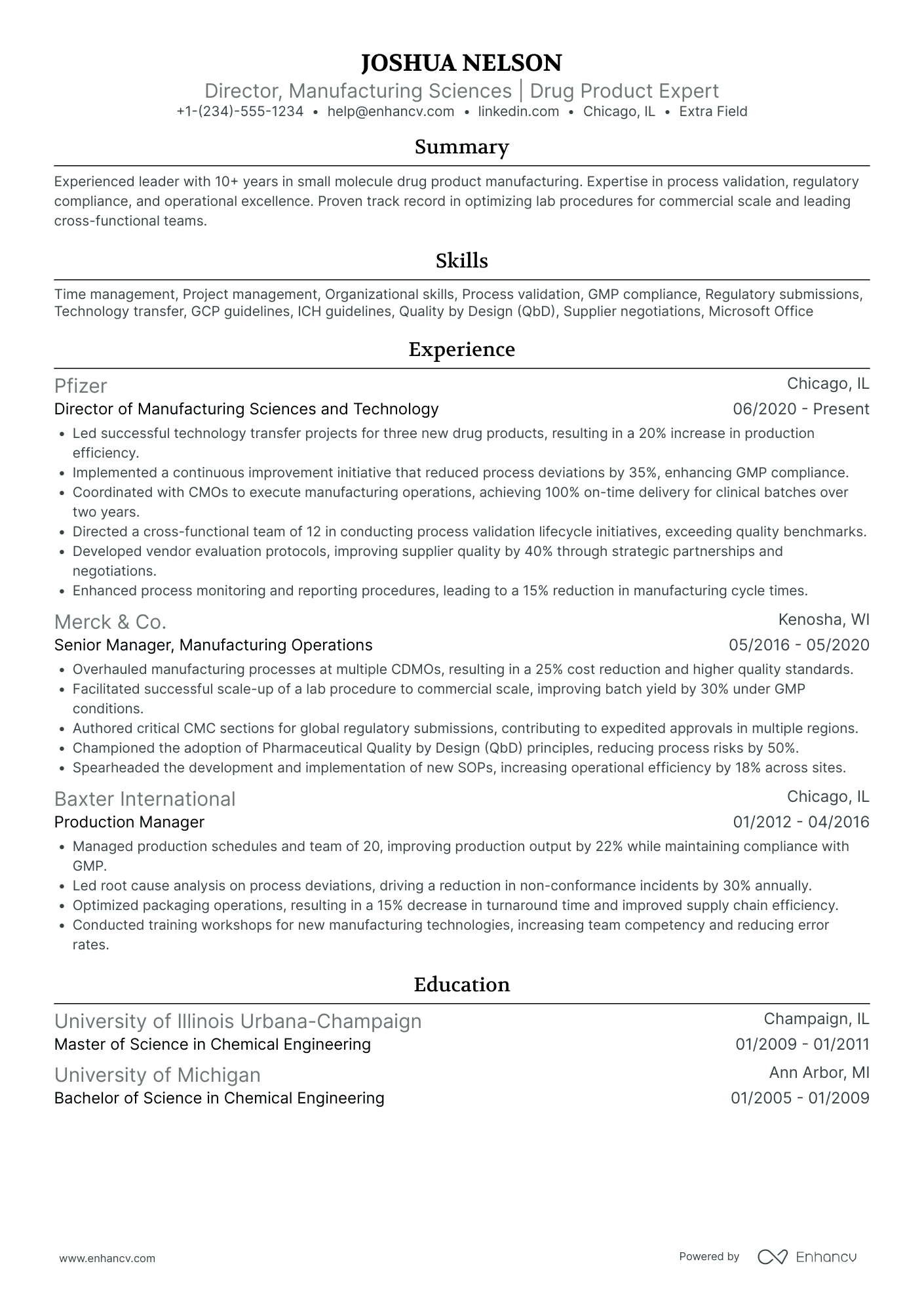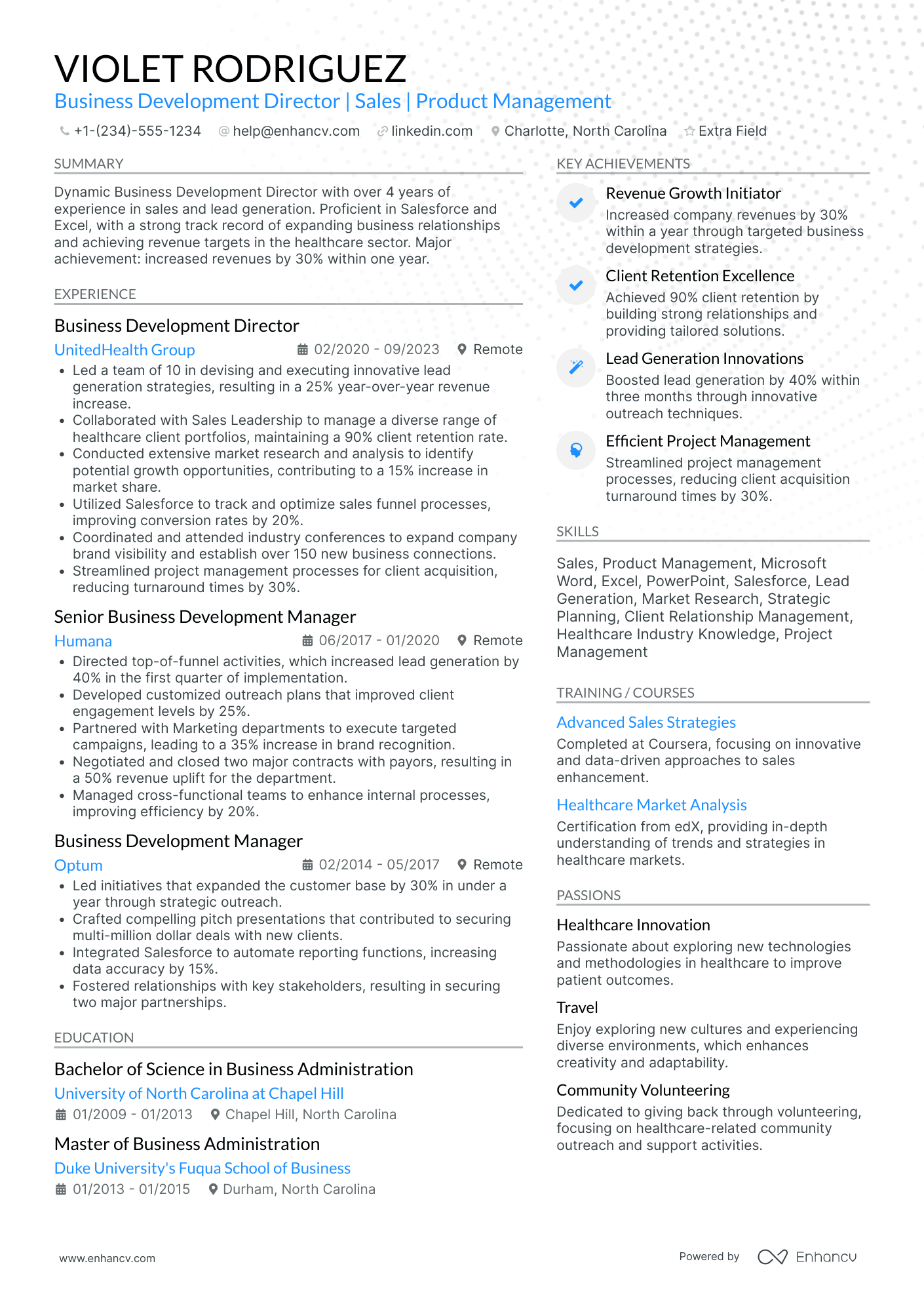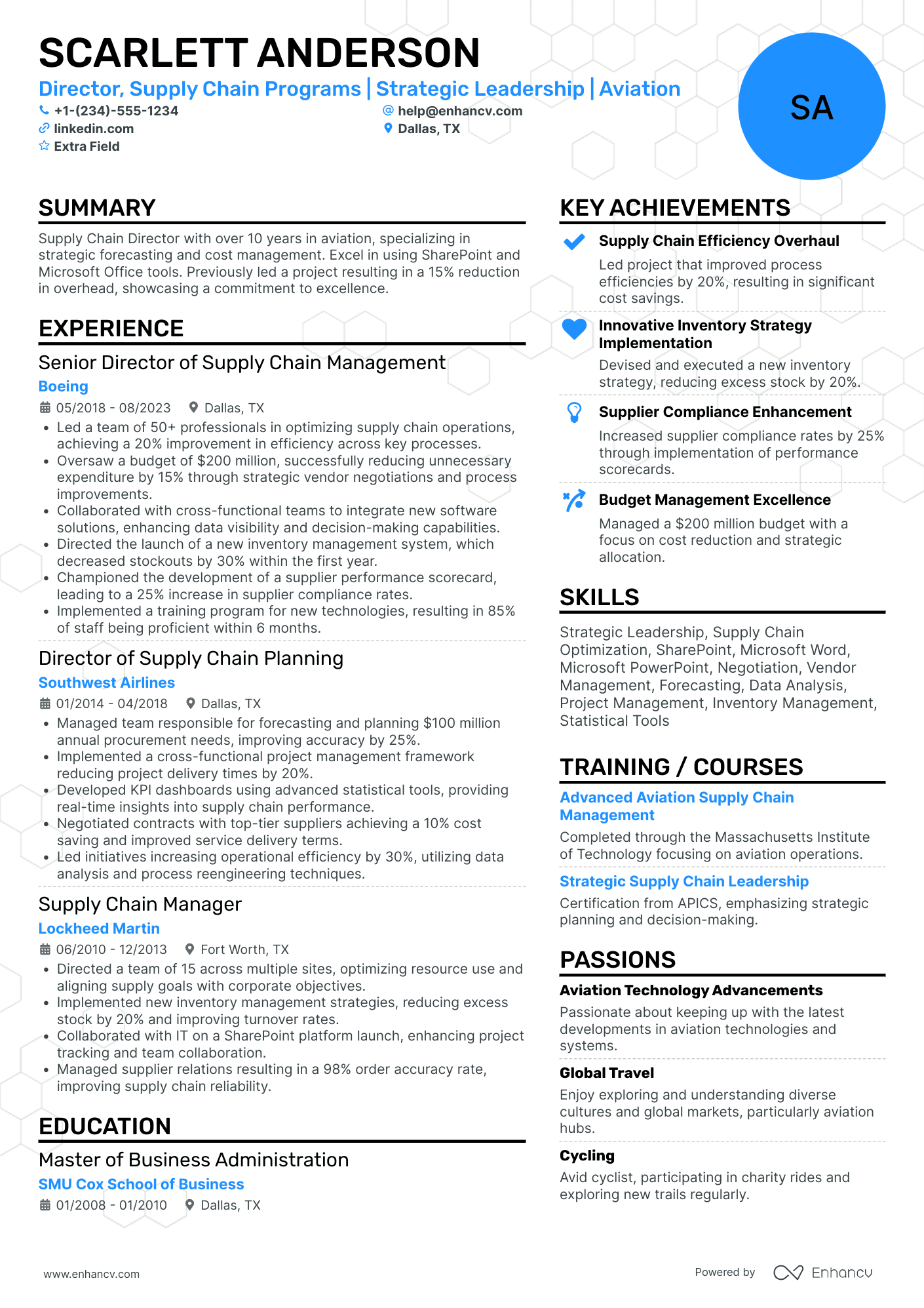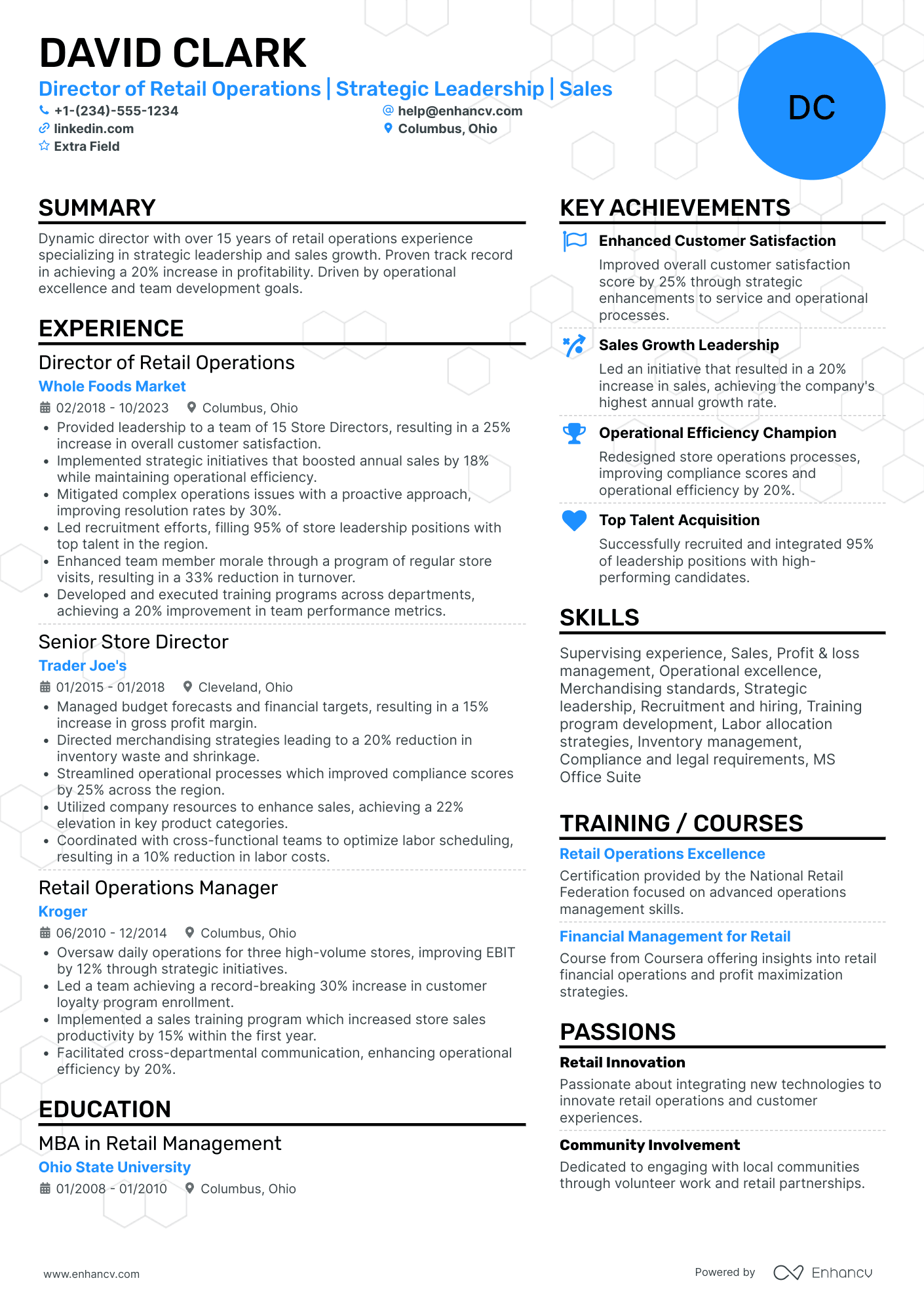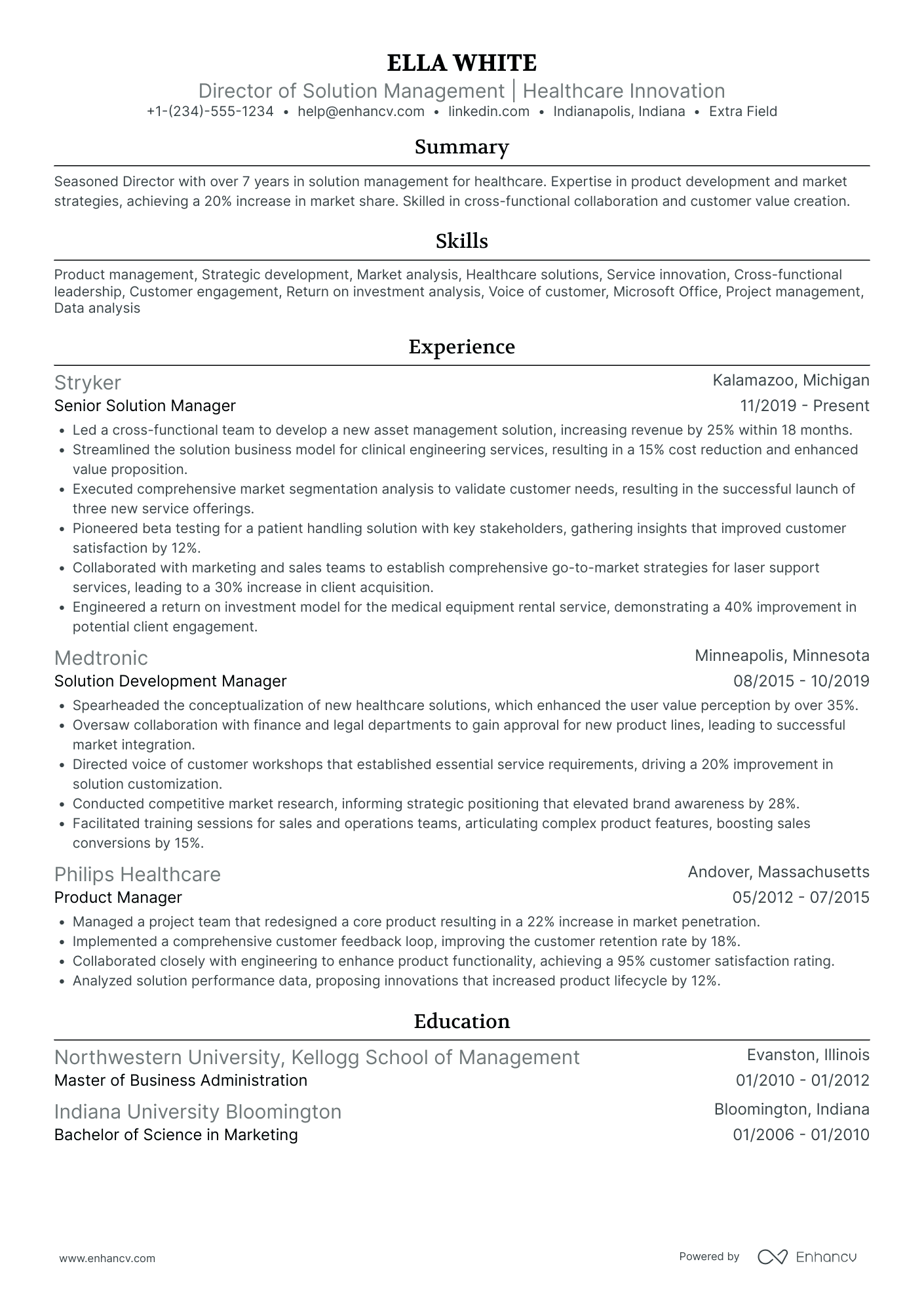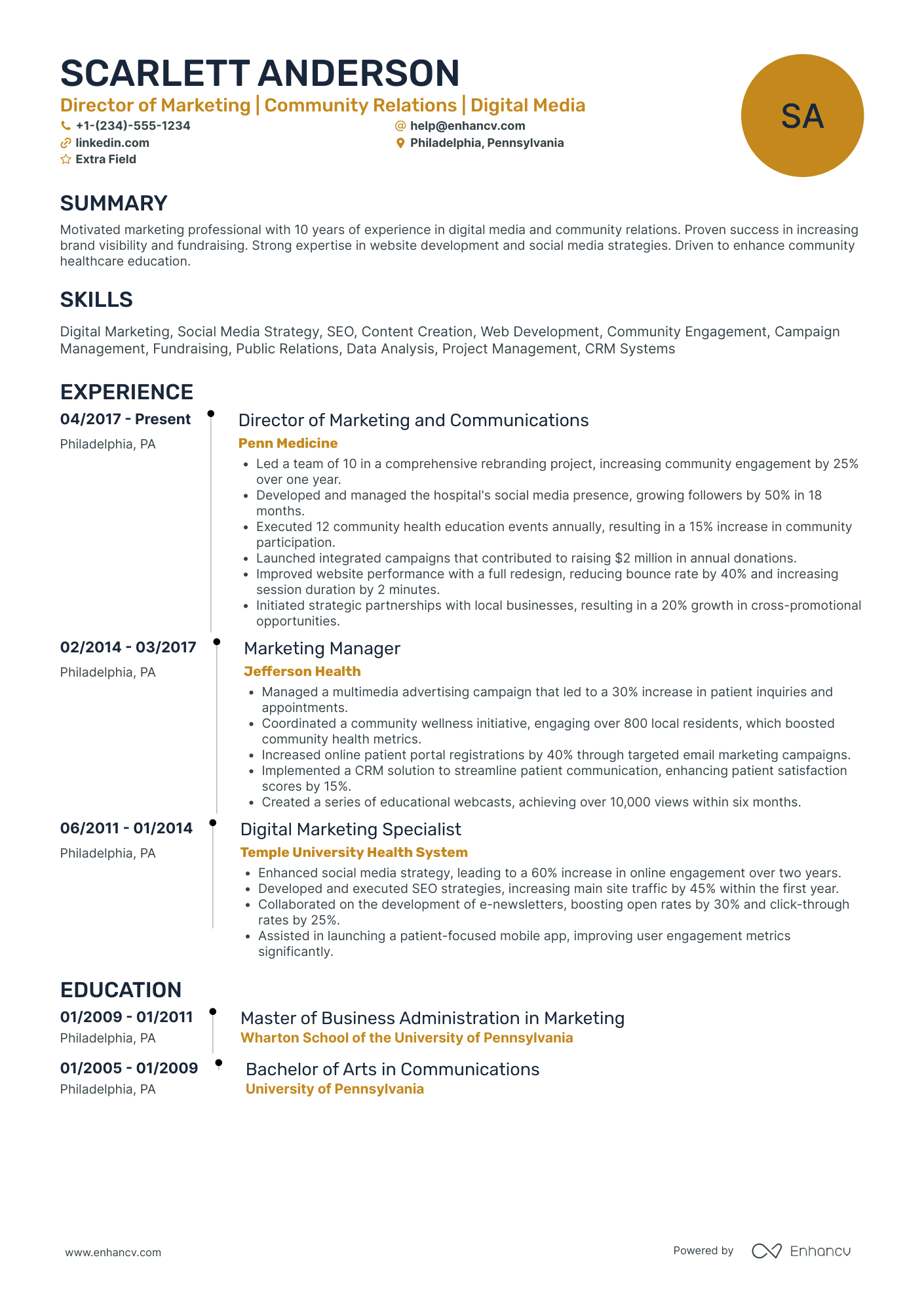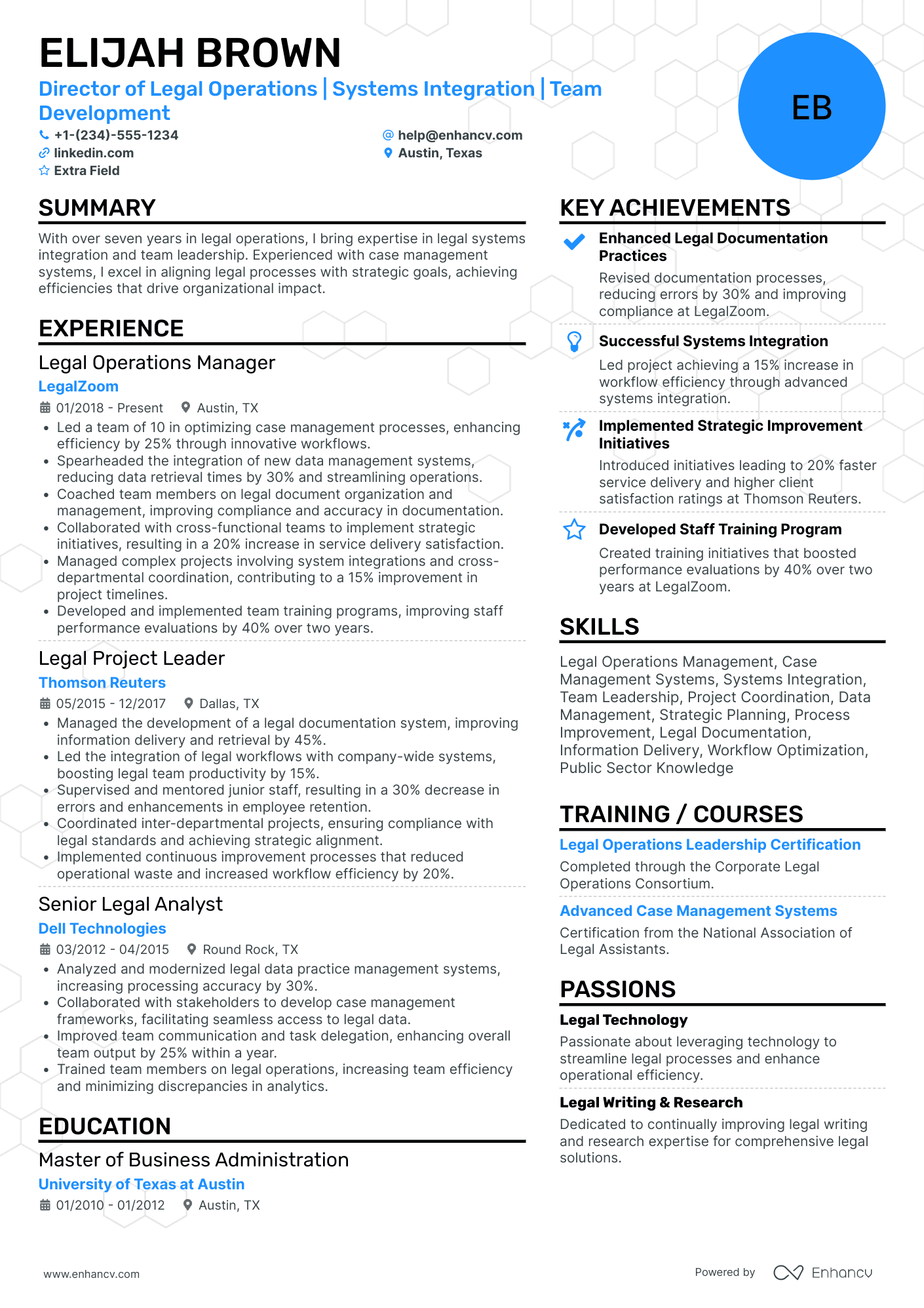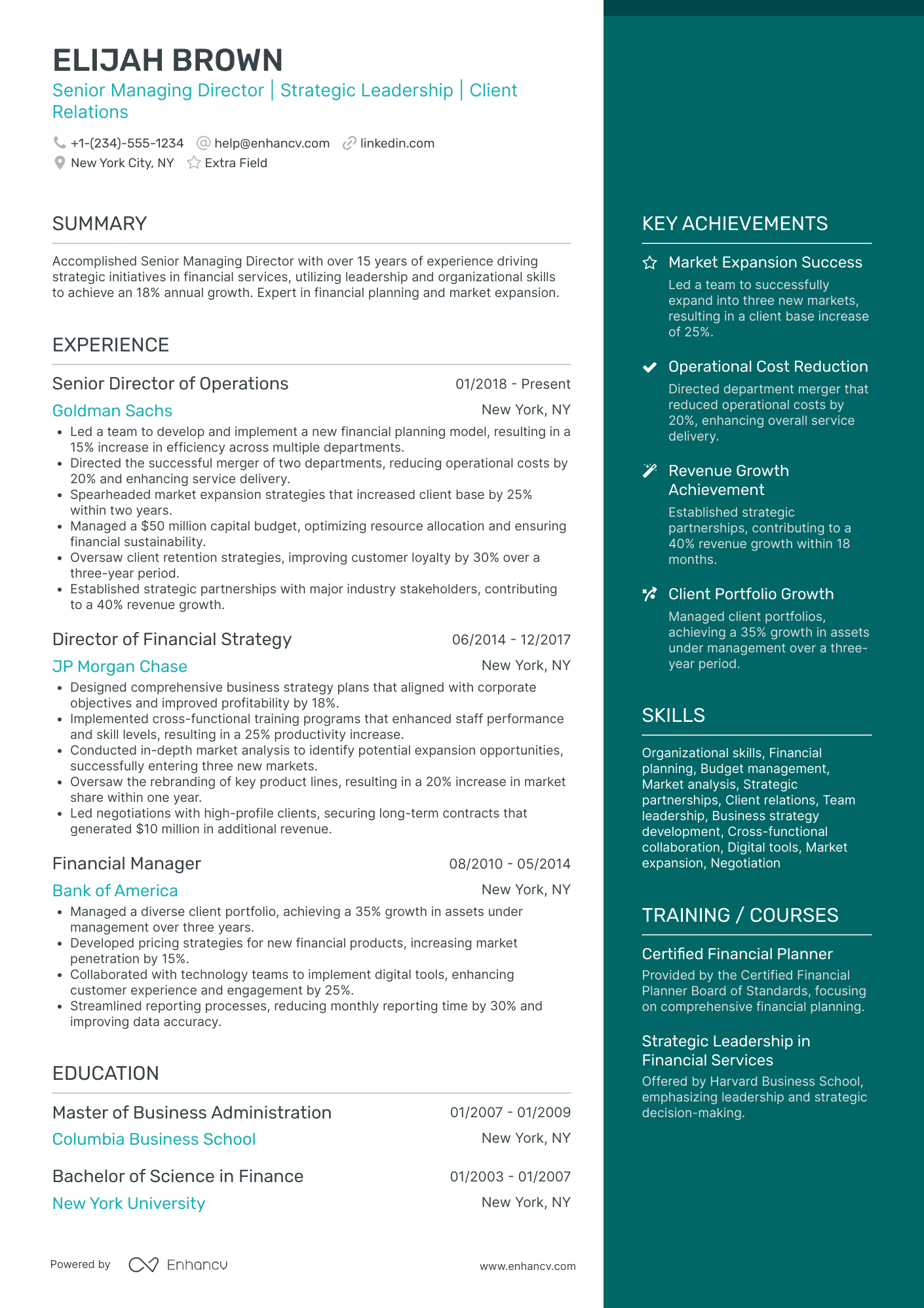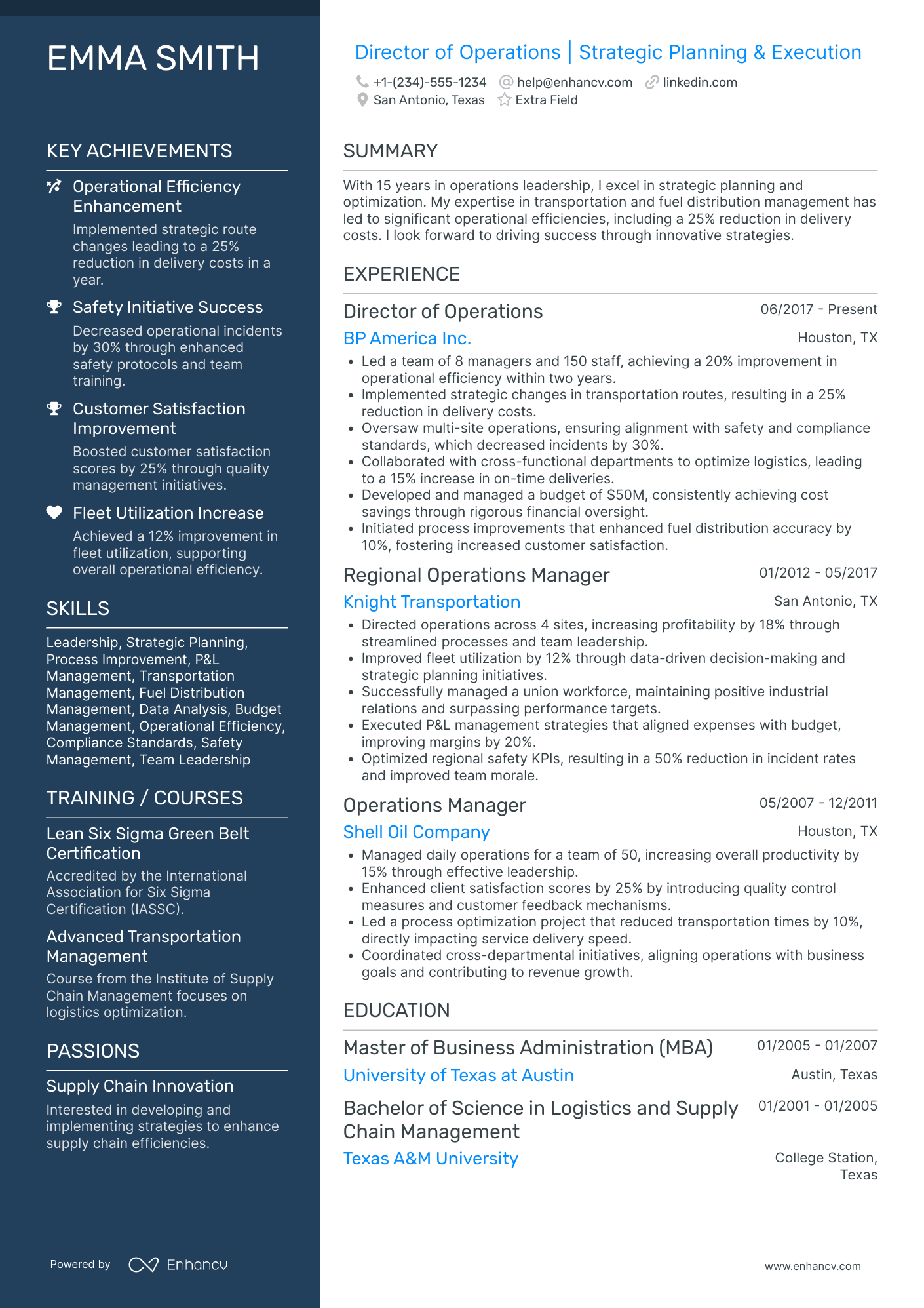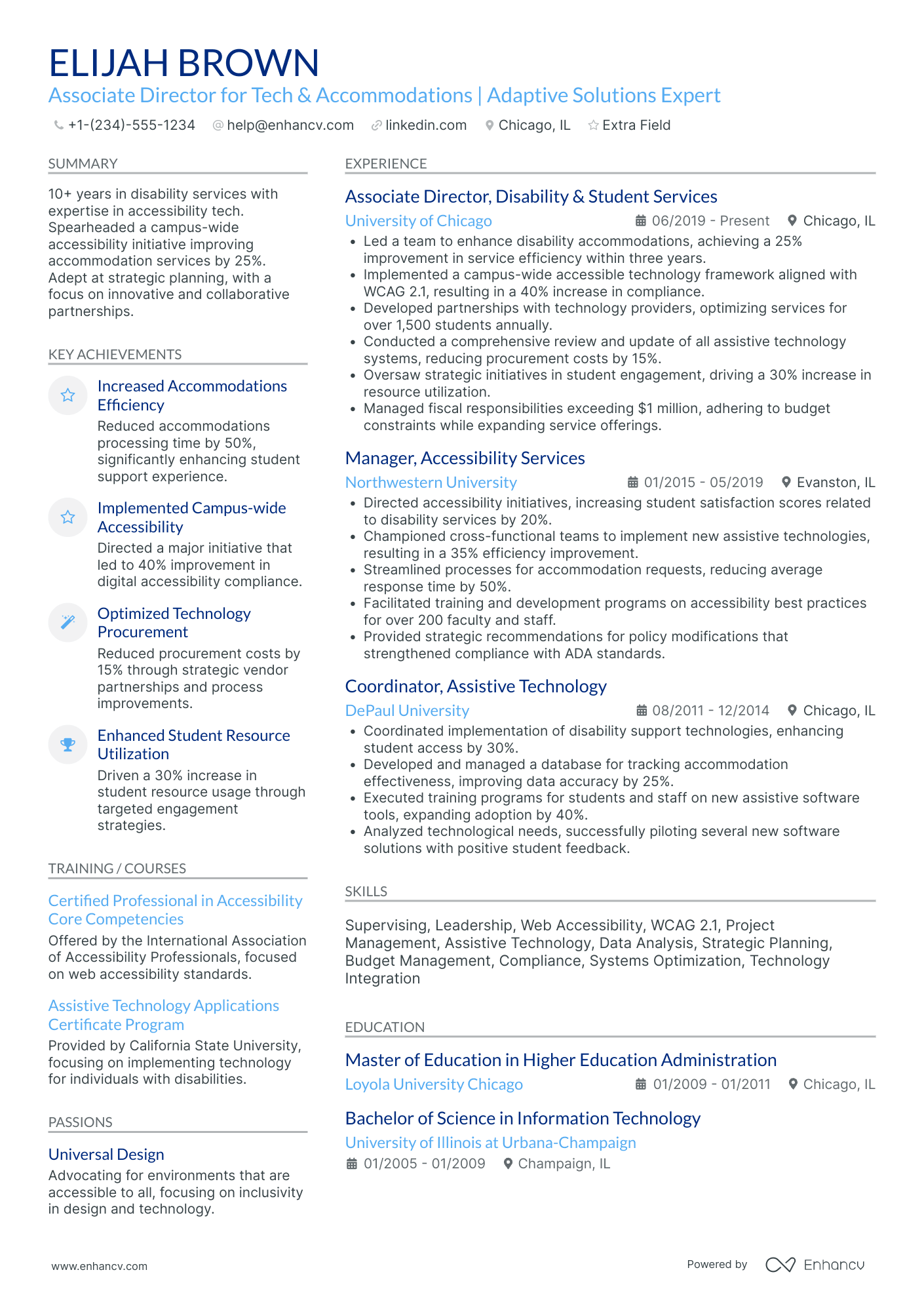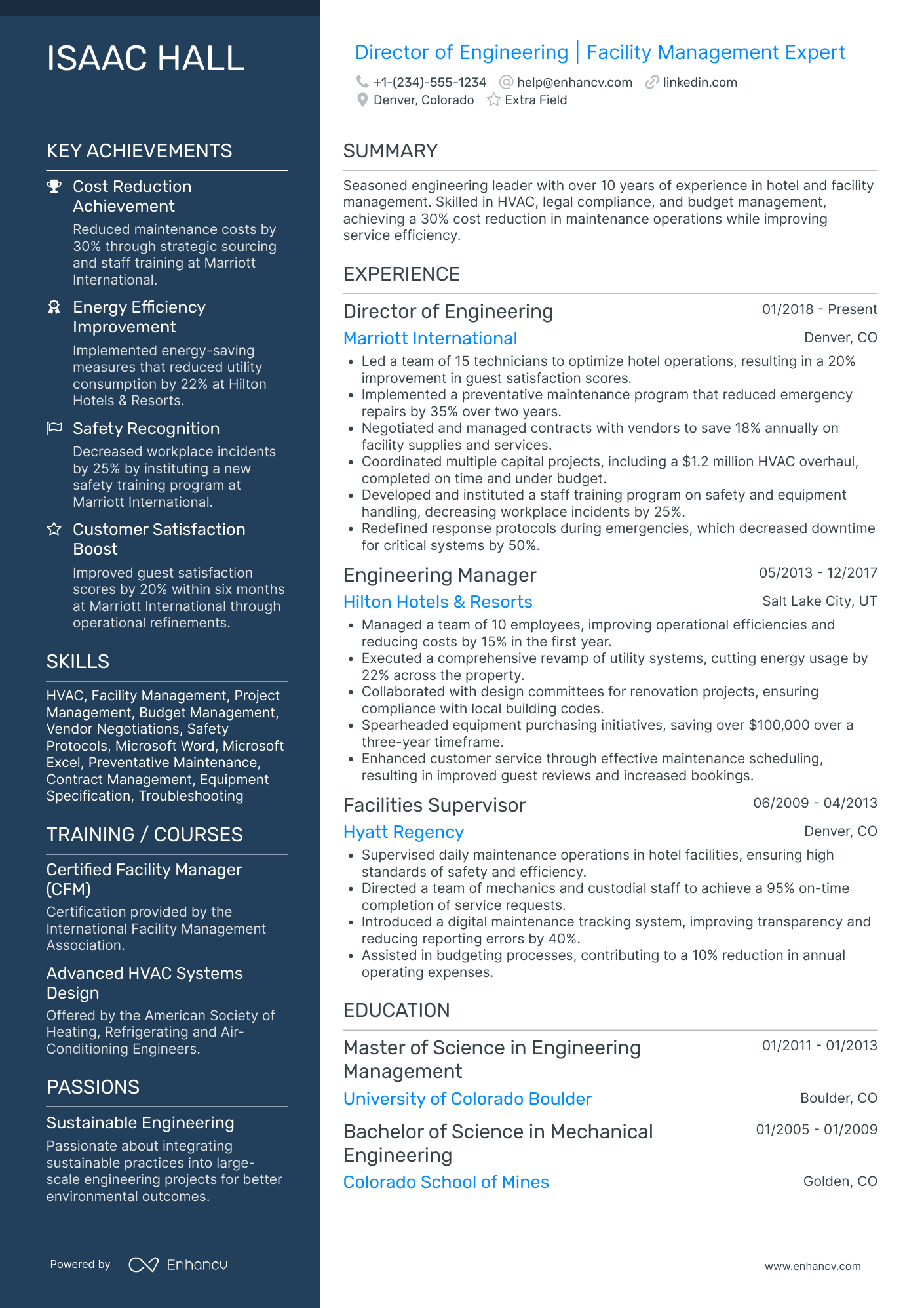Catching up with old friends can give you a new perspective on life. Recently, I met with Laura. She’s a managing director for a local non-profit organization.
Laura was always an activist. Ever since middle school. And she was all about boycotting the corporate world. But, a few years ago the corporate world turned to sustainability.
Now, Laura wanted to join the crusade and change corporations from within. For this purpose, she had to build a new managing director resume.
You might say that she’s moving from one managerial position to another. What is the difference?
Until just a year ago, her non-profit was strapped for cash. She was busy searching for sponsors.
Currently, Laura has millions of operational cash at her fingertips. Instead of gaining supporters, she is busy convincing board members.
Her job title is the same. But the scope of her work is entirely different.
How did she go about building her resume to get the position?
Read on to find out how our team helped her.
This complete guide will teach you
- What hiring managers consider the perfect job applicant
- How to tailor your resume for the specific job posting and stand out among the rest
- What should be the focus of your resume to win the recruiters’ attention
- How to make the most of the skills section and balance out your hard and soft talents
- How to make a strong statement with the experience section and show you are the right person for the job
How to tailor an outstanding managing director resume
Much like with any other resume, you must concentrate on past achievements. Potential employers want to see you are results-oriented. You need to deliver on what you sell.
But this won’t be enough to set yourself apart. There are a few other points you need to factor in your resume:
- The industry knowledge you have - niches, products, services, etc.
- The size and types of companies you’ve managed before
- The budgets you have operated with, as well as the company turnover
Hiring managers need to know the scope of your duties and talents. As you can see in Laura’s case, running a local non-profit organization is one thing.
But managing complex supply chains for a multinational company is an entirely different case.
That’s why it's important to customize your resume according to the job ad. If you display your accomplishments the right way, recruiters will see that you have:
- Taken the time to consider their offer
- Supplied them with the appropriate information to make an informed decision
Even if you have experience in a different niche, your skills are transferable.
And if you show you are a fast learner, start preparing for the interview. Because you’re getting the callback.
All that is left is to select the right resume layout. The best one for a managing director position is the reverse-chronological format.
Why?
This is not an entry-level position. You need to present a clear career progression. Reveal all the skills you've developed along the way.
What does this look like?
Key sections to have on your managing director resume:
- An error-free header to frame your basic information
- A succinct resume summary to highlight your best achievements
- Experience section to brag a rich professional history
- An education section to show you have all the necessary qualifications
- A skills box to feature extra skills you haven’t had the chance to list yet
There are other chance-boosting segments you can add to your resume. But these depend on your level and type of expertise. More on this later.
What should be the focus of your resume to amaze recruiters?
- What is important to you professionally? What about personally?
- What are your values and aspirations?
- What is your management style? Can you give an example?
- What mistakes have you made in the past? What did you learn from it?
- What types of clients have you worked with before?
The resume header: making a good first impression
Let’s start with the unassuming box at the top of your resume - the header.
This is your business card.
And as such, it should look as clean and sharp on its own as it is within your resume.
Managing directors are often the face of the company they manage. They serve as brand ambassadors when meeting potential clients and partners.
Your “business card” should reflect that.
2 managing director resume header examples
Laura’s first attempt looked like a quickly-scribbled paper note:
It says, “Here is how you can contact me. We can sort the other things later”.
It makes you feel like an afterthought, doesn’t it? Imagine how a recruiter or a potential client might feel.
Attention to detail is essential. Laura needs to:
- Spell out her full name
- List more details about her location
- Include a LinkedIn profile
Unless you are a recognizable brand, don’t shorten your name.
Also, Laura is located in New York. Although this is a small state, she still needs to specify the exact borough.
The area code in her phone number is the only hint she is located in Brooklyn.
Finally, adding a LinkedIn profile is a must. If you don’t have one, make one.
It:
- informs hiring managers of your networking abilities
- shows if your character is in line with your potential employer’s culture and policies
Better!
Onto the resume summary…
How to write a winning summary for your managing director resume
Next on the list is the resume summary. As scary as it may sound, this is your last chance to wow hiring managers before they decide whether to read on. Or discard your resume.
Given this isn’t an entry-level position, you must have a few shining trophies under your belt. Start with your biggest accomplishments.
Then, state which areas of management are your forte. Put an emphasis on duties which show different aspects of your management style.
If you have experience supervising multiple or large-scale projects, add them.
Any industry-specific awards and talents are also welcome. Just make sure you don’t go overboard. Be succinct.
Don’t be scared. Laura’s first draft wasn’t that spectacular either.
Optimize your resume summary and objective for ATS
Drop your resume here or choose a file.
PDF & DOCX only. Max 2MB file size.
2 managing director resume summary examples
Here is what you need to avoid:
What’s wrong with it?
She hasn’t mentioned any professional achievements. This is strange. Especially for someone who has more than 10 years of experience as a managing director.
As a result, the first two sentences paint a very bad picture of Laura’s employment history. They also make her sound unsure of her own capabilities.
More importantly, the summary unveils what Laura wants to gain. Not what she has to offer.
Let’s revise it:
Instead of relying on job description buzzwords, now Laura shows she:
- Can generate revenue like no other
- Can build teams, lead and multitask
- Has in-depth technical knowledge
- Her language skills are an opportunity to do business with previously untapped markets
This is how you write a winning summary!
What’s next?
How to feature a wide range of abilities in the experience section of your resume
Don’t succumb to the to-do list writing style. Your resume is not a reiteration of the requirements description section from the job ad.
This is the place where you must display versatility. Even if you lack the experience, make sure each entry:
- Explains a different aspect of your work;
- Displays a gradual expansion of your responsibilities
- Exhibits your management style and techniques
- Indicates character traits which align with your potential employer’s values
More often than not, hiring managers will contact your references before calling you. One of their main goals is to find out what kind of a person you are.
Both at work and in your private life.
They need to know whether you’re the right fit before presenting you to your potential employer.
Don’t worry about not being able to include everything on your resume. You can elaborate on your character in your cover letter.
Managing director resume experience examples
Notice anything wrong here?
- •Designed and launched new products and services
- •Devised and curated leadership seminars
- •Re-negotiated vendor contracts
Remember when I said that managing directors are the face of the company they manage? Well, it doesn’t do Laura to merely mention the business category of her current employer.
Hiring managers don’t have the time to do extra research, unless they have a good reason to do so.
It also shows that Laura isn’t very invested in the business the company provides. No employer wants to be represented in this way.
Besides, she hasn’t listed any significant achievements for the 8 years she’s worked there. This is a big red flag. No one wants an unmotivated applicant.
A better example would be:
- •Designed and launched 3 lines of sustainable watches, turning them into all-time best sellers.
- •Established XYZ company as a major player in the sustainable watch niche by increasing its market share by 35%
- •Devised and curated leadership seminars, which led to an 84% overall boost in productivity across departments
- •Sourced local vendors, which reduced service delivery costs by 140% and operational time by 170%.
Right from the start Laura identifies herself with the company’s mission statement. Green and sustainable.
Afterwards, she boasts:
- A few lines of products which later become best-sellers
- Big market and business gains for her employer
- Guiding and helping fellow employees to the benefit of her employer
What’s not to love here?
And if you haven’t had the chance to mention some of your talents, there is another section where you can do this.
Managing director resume: which skills are trending in 2022?
“The tectonic plates of traditional workforce models and talent retention have shifted dramatically as a result of the global pandemic and digital transformation, a dynamic which isn’t expected to go away any time soon, according to global leaders. Looking forward, businesses need to shift their focus to adapting to the ‘new nimble’ rather than searching for a ‘new normal.”
Jim DeLoach, Managing Director at Protiviti
Many industries have been affected by the pandemic. Hybrid and remote working models are here to stay.
And like most managers know, a dispersed working force is harder to supervise.
As such, there have been shifts in both the technical and soft skill requirements.
The strengths you include in your resume should reflect how you’ve adapted to the events of the past two years.
Which hard skills will impress hiring managers?
Being able to adjust quickly to a new working style and environment is key.
Apart from your business acumen, you need to be able to work with various pieces of software.
Organizing an online brainstorming session? Remotely managing your staff? There is software for everything.
Brag about how tech-savvy you are.
Here is a well-rounded list of hard skills you can include on your resume:
High-priority technical skills for your managing director resume:
- Business development
- Program management
- Budgeting
- Financial responsibility
- Resource allocation
- Business administration
- Sales
- Employment law
- Corporate law
- Corporate finance
- Contract Analysis
- SOX controls,
- FINRA regulations
- Risk and compliance procedures and practices
- Risk management
- Data management
- Ability to manage complex supply chains
- Policy development
- Marketing
- Research
- Quality control and assurance
- Documentation
- Report writing
- MS Office
- Microsoft Dynamics
- Google Docs
- Google Hangouts
- Zoom
- Monday.com
- Huddle
- Skiff
- Quip
- Miro
- BI Studio
- Diligent Boards
- Quickbooks
- Salesforce
- Oracle
- Notion
- Trello
- Jira
- OpenElevator
- ZenPayroll
- i-Sight
Describing soft skills on your managing director resume
Adaptability, flexibility and mindfulness.
These are among the top skills which stand out to recruiters.
But how do you boast soft skills on a resume?
Link them to measurable results. Even though most of your responsibilities revolve around building relationships, employers want results.
Take a look at the examples below:
Remember, even the smallest drop of water can have a big ripple effect.
You’re personable? Employees must be comfortable sharing their concerns with you. You’re good at forecasting? Your employer must be thrilled that you deliver on your promises.
Don’t underestimate yourself.
If you’re wondering which skills to list on your resume, here is what hiring managers are on the lookout for:
Must-have soft skills for your resume:
- Strategic planning
- Team leadership
- Employee motivator
- Decisive nature
- Result-oriented
- Negotiation
- Mentoring and training
- Staff management
- Consulting
- Ability to work in a stressful and fast-paced environment
- Strong work ethic
- >Leadership skills
- Resourcefulness
- Creativity
- Detail-oriented
- Time management
- Accuracy
- Organizational skills
- Analytical skills
- Fast learner
- Think outside the box
- Innovative
- Confidence
- Social Aptitude
- Pragmatic
- Hard working
- Personable
- Communication skills
- Accountability
- Flexible
- Guide and coach
- Multitasking
- Forecasting
- Open-mindedness
Is it important to have an education section on your resume?
A resounding yes!
It’s unimaginable to secure a managing director position without an MBA. Or at least a BBA.
But are there any other relevant degrees you can list?
Of course there are:
- BS Financial Accounting
- BS Economics
- BS International Business and Trade
- BA Business Management and Leadership
- Finance MBA
- MA Strategic Management
- MS Service Leadership and Innovation
- Critical Thinking Principles Course
- Board Director’s Programme
- International Directors Programme
Keep in mind that some niches require more specialized knowledge. For example, if you're in the medical field, you may need to have a BS in Pharmacy.
Check out our article on how to feature an MBA degree on your resume the right way, if you need more tips!
What about listing certificates on your managing director resume?
Another resounding yes!
Top 17 managing director certificates for your resume:
- Program Management Professional (PgMP)
- Certificate of Management Excellence
- Certified Management Executive (CME)
- Certified Management Accountant (CMA)
- Advanced Certificate in Corporate Governance
- Executive Leader Postgraduate Certificate
- Project Management Professional (PMP)
- Certified Manager Certification (CM)
- Six Sigma Green Belt
- Change Management Certified Professional
- Certified Sales Professional (CSP)
- Senior Professional in Human Resources (SPHR)
- Certified Investment Management Analyst (CIMA)
- IT Information Library Foundations Certification (ITIL)
- Certified Risk Manager (CRM)
- Certified Revenue Management Executive (CRME)
- Certified in Financial Management
These show how involved you are with your particular industry. And how up-to-date are your managing techniques.
Don’t forget to check the validity of your certificates before including them in your resume.
Are there any other extras you can add to your managing director resume?
Let's imagine you work in the luxury goods industry. This usually involves lots of travel. Being able to speak a foreign language is a good selling point.
Hence, the additional sections depend on your business niche and the market you serve.
Any of the following guarantee you bonus points:
- Cover letter
- Referrals and recommendations
- Licenses
- Trainings
- Side projects
- Foreign languages
Check which ones apply to you and append them to your resume.
Key takeaways to remember when building your resume
- Customize your resume, each managing director position is different
- Exhibit a clear career path and rich professional development
- Make sure the header is error-free - it's your business card
- Pack you resume summary with your biggest accomplishments
- Emphasize the variety of companies you have managed
- Let your experience section reflect your management style
- Be succinct and elaborate on your character traits in the cover letter
- Practice good social media hygiene - recruiters check for corporate culture compatibility
Managing Director resume examples
By Experience
By Role

